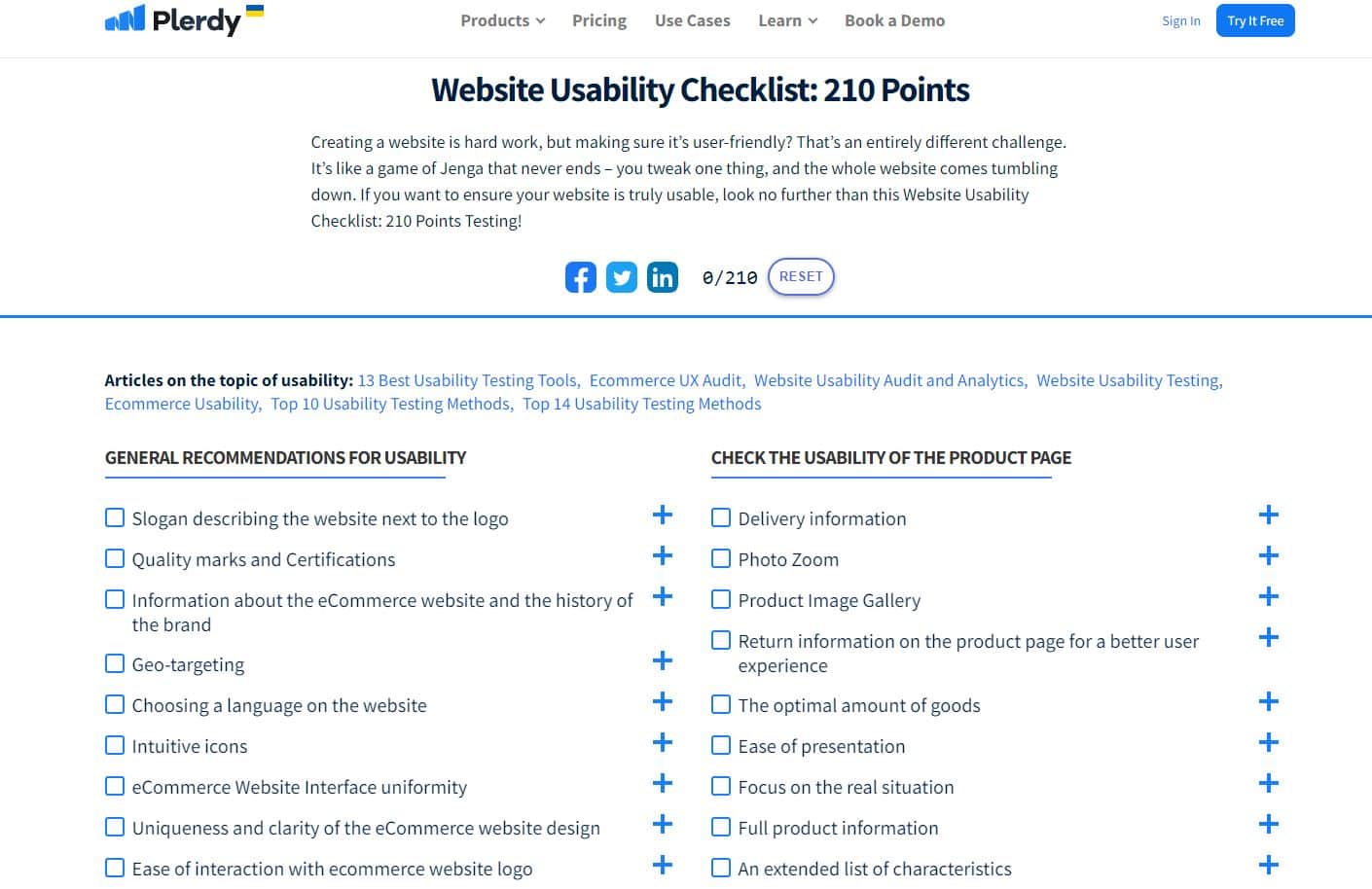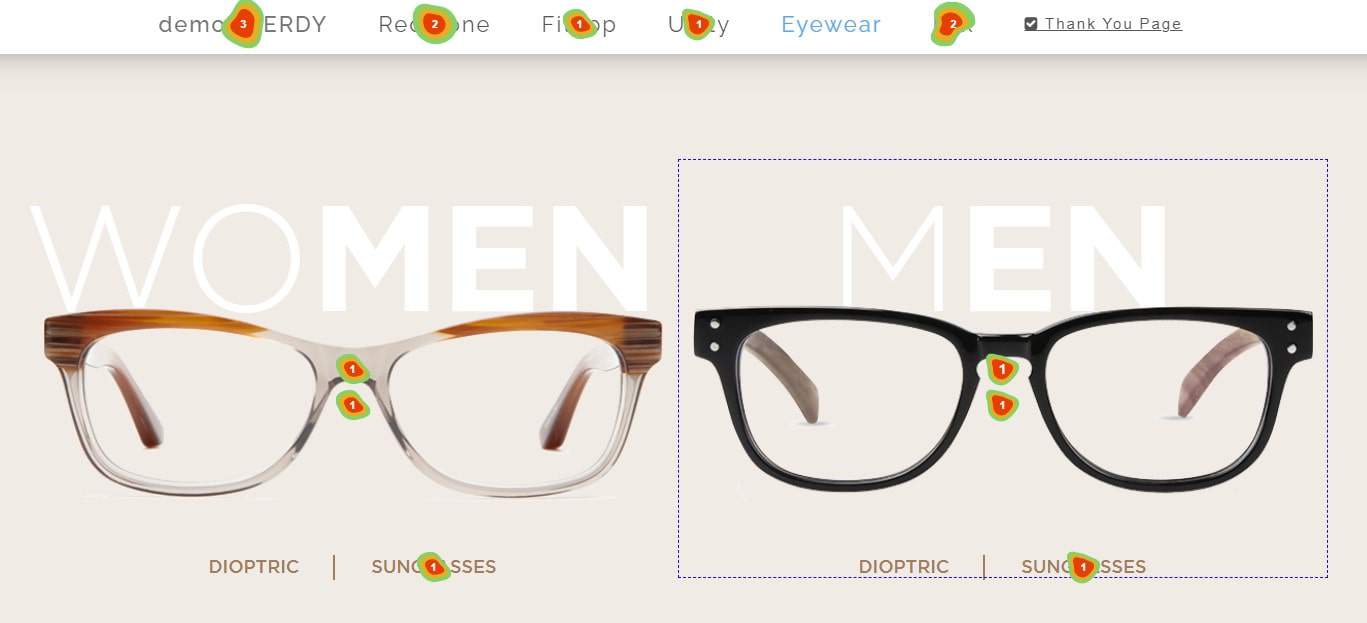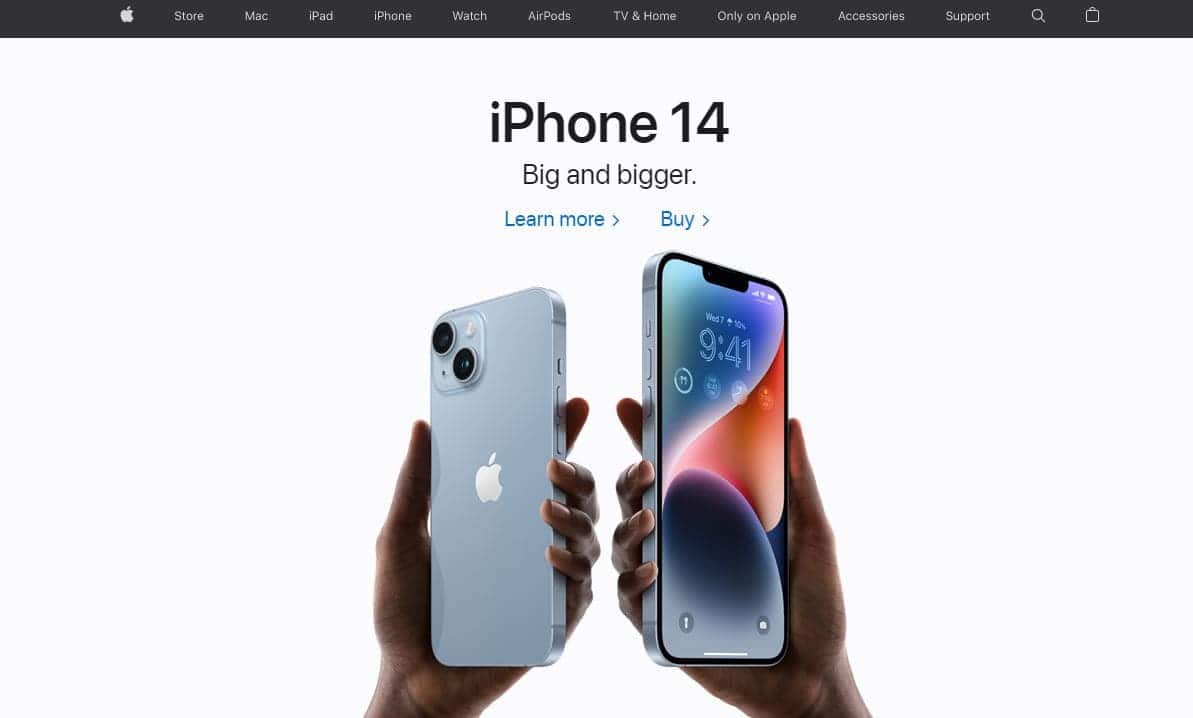Dive headfirst into Guerrilla Usability Testing – an efficient, cost-effective approach to sharpen your product’s user experience. This dynamic method allows you to:
- Conduct on-the-spot tests
- Target real users in natural environments
- Collect valuable feedback rapidly

Armed with guerrilla tactics, you’ll swiftly identify usability pain points and swiftly implement improvements. No need for lab setups or lengthy planning – just hit the ground running and watch your product evolve! Unleash the power of Guerrilla Usability Testing, and witness firsthand its potential to revolutionize your design process.
Benefits of Guerrilla Usability Testing
Unlock the full potential of Guerrilla Usability Testing and revel in its numerous benefits. This innovative method provides the following:
- Speedy results – tackle usability issues without delay
- Budget-friendly approach – a cost-effective alternative to traditional testing
- Real-world insights – feedback from users in their natural habitat
By leveraging Guerrilla Usability Testing, you’ll streamline your design process, enhance user experience, and stay ahead of the competition. It’s time to embrace this game-changing method and watch your product thrive like never before. So don’t wait – unleash the power of Guerrilla Usability Testing today!
Guerrilla Usability Testing vs. Traditional Usability Testing: The Showdown

Discover the differences between Guerrilla Usability Testing and its conventional counterpart, and make informed decisions for your UX design process. Comparing these methods reveals key distinctions:
- Time and Cost: Guerrilla testing cuts to the chase, delivering rapid results at a fraction of the cost. Traditional testing, on the other hand, often demands significant time and financial investment.
- Environment: Guerrilla testing thrives in real-world scenarios, capturing authentic user reactions. Traditional testing, however, typically takes place in controlled lab settings.
- Sample Size and Diversity: While Guerrilla testing often has smaller, less diverse participant groups, it compensates with the ability to perform multiple tests with ease. Traditional testing benefits from larger, more representative samples but can be logistically challenging.
Choosing between Guerrilla and Traditional Usability Testing depends on your project’s specific needs and constraints. Weigh the pros and cons, and select the approach that best serves your design goals. Ultimately, it’s about striking the perfect balance to optimize the user experience (UX).
Planning Your Guerrilla Usability Testing
Ace Guerrilla Usability Testing planning with these vital steps:
- Set clear objectives
- Pinpoint your target audience
- Scout prime testing locations
- Craft engaging test scenarios
With careful planning, Guerrilla Usability Testing can improve your product’s user experience.
Chart Your Course: Define Guerrilla Usability Testing Objectives

Kick off your Guerrilla Usability Testing journey by setting crystal-clear objectives. Pin down your goals, such as:
- Uncover pain points in user flows
- Validate new features or design changes
- Assess accessibility and inclusivity
You’ll pave the way for targeted, actionable insights by nailing down your testing objectives. Stay laser-focused on what matters most, and watch websites’ UX skyrocket. It’s time to define, conquer, and thrive in Guerrilla Usability Testing.
Zero in on Your Target: Selecting the Right Audience for Guerrilla Usability Testing

Hone your Guerrilla Usability Testing strategy by pinpointing the ideal target audience. Cater to your product’s unique user base and maximize the relevance of the feedback you collect. Consider these crucial factors when selecting your target audience:
- Demographics: Align your test participants with your product’s core user demographics, such as age, gender, and location.
- User Experience Level: Seek a mix of novices and veterans to capture diverse perspectives on your product’s usability.
- Tech Savviness: Balance participants with varying degrees of technological expertise to ensure a comprehensive understanding of your product’s user-friendliness.
By carefully selecting your target audience, you’ll glean invaluable insights into your product’s usability and uncover opportunities for improvement. Stay attuned to your user’s needs, and watch your product flourish in the hands of your ideal audience. So, get out there, find your people, and let the Guerrilla Usability Testing magic unfold!
Location, Location, Location: Picking the Perfect Spot for Guerrilla Usability Testing
Set the stage for success in your Guerrilla Usability Testing endeavors by choosing an optimal testing location. Keep these factors in mind to find the perfect spot:
- Relevance: Select venues frequented by your target audience, such as cafes, coworking spaces, or public transport hubs.
- Ambiance: Ensure the environment is quiet for meaningful testing interactions.
- Accessibility: Pick easily reachable locations for testers and participants, with ample space for comfortable test execution.
You’ll create a conducive atmosphere for capturing authentic user feedback by nailing down the ideal testing location. Striking the right balance between relevance, ambiance, and accessibility will set the stage for smooth, productive Guerrilla Usability Testing sessions.
Craft Engaging Test Scenarios: The Cornerstone of Guerrilla Usability Testing

Elevate your Guerrilla Usability Testing by designing compelling test scenarios and tasks. Keep these essential tips in mind:
- Relevance: Align tasks with your testing objectives to hone in on desired insights.
- Clarity: Create concise, easy-to-understand instructions that keep participants on track.
- Variety: Mix tasks to cover different aspects of your product’s user experience.
Engaging, tailored scenarios will yield valuable feedback and reveal improvement opportunities. So bring your Guerrilla Usability Testing to life with well-prepared tasks and watch your website thrive!
Ace Guerrilla Usability Testing: Conducting the Test
Achieve top-notch Guerrilla Usability Testing with these essential steps:
- Approach: Engage potential participants politely and confidently.
- Explain: Communicate the test’s purpose clearly and concisely.
- Observe: Watch interactions closely and gather valuable feedback.
Master these tactics to conduct guerrilla testing and elevate your website UX successfully!
Guerrilla Usability Testing: A Guide to Recruiting Participants

Recruiting participants for Guerrilla Usability Testing can seem daunting, but you’ll gather invaluable feedback with the right approach. Follow these practical tips to assemble the perfect test group:
- Target demographic: Zero in on your ideal user demographic to ensure relevant results.
- Incentives: Offer small rewards like gift cards or refreshments to motivate involvement.
- On-the-spot recruitment: Approach potential participants in public places, like coffee shops or parks, to catch users in their natural environment.
- Brief, friendly pitch: Explain the test’s purpose and duration to put participants at ease.
- Flexible testing: Adapt your schedule to accommodate participants’ availability and preferences.
Implementing these strategies will create an engaging and efficient Guerrilla Usability Testing experience. Secure a diverse pool of participants to receive meaningful, actionable feedback that propels your product’s user experience to new heights.
Setting Up the Testing Environment

A well-organized testing environment is essential for successful Guerrilla Usability Testing. Therefore, keep these key elements in mind when setting up:
- Low-distraction: Choose a quiet, comfortable space that minimizes background noise and interruptions.
- Device readiness: Ensure devices are charged, updated, and loaded with necessary apps or software.
- Recording tools: Set up cameras or screen recording software to capture user interactions.
- Test materials: Prepare task lists, consent forms, and note-taking materials for easy access.
- Time management: Allow ample time for setup and adjustments before participants arrive.
Addressing these factors will create a seamless testing environment that encourages authentic user feedback and generates actionable insights.
Running the Test Sessions

When conducting Guerrilla Usability Testing, follow these guidelines for smooth and efficient test sessions:
- Warm welcome: Greet participants and make them feel at ease, setting the stage for candid feedback.
- Clear instructions: Explain the test’s purpose, tasks, and expectations without influencing user behavior.
- Active observation: Pay close attention to participants’ actions, verbal cues, and non-verbal signals.
- Neutral prompts: Ask open-ended questions and avoid leading participants toward specific outcomes.
- Timely wrap-up: Conclude the session, thank participants, and gather feedback before they leave.
By sticking to these best practices, you’ll ensure meaningful insights and improve the overall usability of your product.
Gathering Feedback and Observations

The post-test analysis is crucial in Guerrilla Usability Testing, and it starts with effective feedback collection. Next, implement these strategies to capture valuable insights:
- Debrief sessions: Conduct post-test interviews, encouraging participants to share their thoughts and experiences.
- Note-taking: Jot down key observations during the test to capture positive and negative aspects.
- Recordings: Use audio or video recordings to revisit user interactions and identify patterns or issues.
- Plerdy integration: Utilize tools like Plerdy to track user behavior, mouse movements, and clicks—revealing usability strengths and weaknesses.
- Team collaboration: Involve stakeholders in the review process, promoting diverse perspectives and comprehensive analysis.
By combining these feedback-gathering techniques, you’ll amass a wealth of data, enabling informed decisions to enhance your product’s usability. Prioritize improvements based on user feedback, creating a user-centered experience that stands out from the competition.
Analyzing Guerrilla Usability Testing Results
Unlock actionable insights by sifting through Guerrilla Usability Testing data. Spot patterns, pinpoint pain points, and zero in on opportunities to refine your product. Success is attainable, so roll your sleeves and delve into the feedback goldmine!
Identifying Patterns and Trends

Guerrilla usability testing results are treasure troves for discovering patterns and trends. To make the most of the data, follow these steps:
- Cast a wide net: Go over the feedback and observations collected, keeping an open mind.
- Find the threads: Look for recurring issues or suggestions multiple participants mentioned.
- Categorize the findings: Group similar observations to make them easier to analyze.
- Prioritize the data: Rank the patterns based on their impact on user experience and overall importance.
Connecting the dots will uncover valuable insights to fine-tune your product. It’s like putting together a jigsaw puzzle—each piece reveals a part of the bigger picture. So, take a deep breath, plunge into the data ocean, and come up with a treasure trove of actionable improvements. Your product’s success is on the horizon!
Prioritizing Issues and Recommendations
Post-guerrilla usability testing, it’s crucial to prioritize issues and recommendations for swift action. To tackle this challenge head-on by:
- Separating the wheat from the chaff: Identify critical issues affecting user experience.
- Weighing the impact: Assess the severity of each problem and the value of each suggestion.
- Allocating resources wisely: Direct your team’s efforts towards high-impact improvements.
- Creating a roadmap: Plan short-term and long-term actions to rectify problems and implement enhancements.
When you roll up your sleeves and dive into the data, you’ll emerge with a clear path forward, ensuring your product reaches its full potential. So, buckle down and get ready to make waves!
Communicating Findings to Stakeholders
After guerrilla usability testing, articulating the results to stakeholders is essential for driving change. To make your message crystal clear, follow these best practices:
- Break the ice: Initiate the conversation by summarizing key findings and their implications.
- Take the bull by the horns: Confidently present the most pressing issues and recommendations.
- Paint a picture: Use visuals like charts or mockups to convey complex data and proposed solutions.
- Highlight the silver lining: Showcase the positive aspects discovered during testing to maintain enthusiasm.
In addition, keep these pointers in mind when engaging stakeholders:
- Speak their language: Tailor your message to your audience, focusing on their concerns and goals.
- Be concise: Deliver information in digestible chunks, making it easy for stakeholders to absorb.
- Foster collaboration: Encourage open dialogue and invite feedback to develop a shared vision for improvement.
By nailing your communication, you’ll rally your team to tackle usability challenges head-on, paving the way for a user-centric product that shines.
Best Practices for Guerrilla Usability Testing

Master guerrilla usability testing by sticking to these golden rules:
- Select diverse participants.
- Keep test sessions short.
- Set up a flexible testing environment.
- Prioritize issues.
- Communicate effectively.
Following these practices will help you hit the nail on the head – optimizing user experience and product success.
Be Flexible and Adaptable
In guerrilla usability testing, adaptability is key to success. Juggle multiple tasks and adjust on the fly, ensuring a smooth testing process:
- Roll with the punches: Be prepared for unexpected situations, and tweak your test plan accordingly.
- Wear many hats: Assume various roles, from moderator to observer, as needed.
- Think outside the box: Be open to unconventional test settings like coffee shops or parks.
By staying elegant and versatile, you’ll ace guerrilla usability testing, capturing invaluable insights for product improvement.
Ensure Participant Comfort and Anonymity
Guerrilla usability testing hinges on a relaxed, candid environment. To foster participant ease and protect their privacy, consider these strategies:
- Break the ice: Engage in small talk to help participants feel at ease.
- Set the stage: Create a comfortable, non-intimidating atmosphere for testing.
- Keep it anonymous: Assure the participant’s identity will remain confidential.
By prioritizing comfort and anonymity, you’ll encourage honest feedback, capturing unfiltered insights to enhance your website’s usability.
Combine Quantitative and Qualitative Data

Guerrilla usability testing thrives on mixing numbers and narratives to paint a comprehensive picture of user experience. Integrating quantitative and qualitative data strengthens your findings:
- Quantitative data reveals patterns and trends: Track metrics like task completion rates, time spent, and error frequencies to quantify performance.
- Qualitative data offer context: Capture user emotions, thoughts, and preferences through open-ended questions, observations, and comments.
To maximize the benefits of both data types, follow these tips:
- Strike a balance: Collect an equal mix of quantitative and qualitative information to inform your analysis.
- Dig deeper: Use qualitative insights to explain quantitative findings, adding depth to your understanding.
- Emphasize storytelling: Present your combined data in a compelling narrative, helping stakeholders grasp the user’s perspective.
By merging quantitative and qualitative data in guerrilla usability testing, you’ll uncover meaningful insights that drive informed decision-making and improve your product’s user experience.
Iterate and Improve Your Testing Process
Guerrilla usability testing is a dynamic, evolving approach, perfect for refining your process with each test iteration. Optimize your testing techniques by adopting these strategies:
- Embrace adaptability: Remain open to change, adjusting your methods as you uncover new insights.
- Reflect on results: After each test, evaluate successes and setbacks, identifying areas for improvement.
- Collaborate with stakeholders: Gather feedback from team members and users, incorporating their perspectives into your testing process.
To enhance your guerrilla usability testing:
- Pilot new techniques: Experiment with various testing methods, settings, and tools to discover the most effective practices for your project.
- Revisit objectives: Regularly reassess your goals, ensuring your testing process aligns with your evolving objectives.
- Foster a culture of learning: Encourage your team to share knowledge, stay current with industry trends, and grow their skills to strengthen your testing process.
By iterating and refining your guerrilla usability testing approach, you’ll fuel continuous improvement and enhance your product’s user experience – staying one step ahead of the competition.
Challenges and Limitations of Guerrilla Usability Testing

While cost-effective and agile, guerrilla usability testing faces hurdles such as uncontrolled environments, potential bias, and limited scope, overcoming these obstacles requires adaptability and resourcefulness, ensuring valuable insights despite inherent constraints.
Sample Size and Representativeness in Guerrilla Usability Testing
Guerrilla usability testing often grapples with sample size and representativeness challenges. Striking the right balance ensures meaningful results that reflect the larger user base. Keep the following in mind:
- Cast a wider net: Seek diverse participants to capture broader perspectives and experiences.
- Embrace the rule of thumb: Aim for 5-10 participants per testing round, as diminishing returns kick in beyond this point.
- Lean on data: Supplement guerrilla test findings with quantitative data to support or refute trends.
While guerrilla usability testing can’t guarantee perfect representativeness, being mindful of sample size and participant diversity helps you gain actionable insights. In addition, continually refining your approach will strengthen your test outcomes, honing in on your product’s most crucial usability improvements.
Navigating the Lack of Control Over Testing Conditions in Guerrilla Usability Testing

Guerrilla usability testing’s informal nature often results in limited control over testing conditions. However, you can still make the most of it by adopting strategies that minimize potential drawbacks:
- Plan ahead: Identify potential testing locations and prepare a list of necessary equipment.
- Embrace adaptability: Adjust your test plan on-the-fly to accommodate unforeseen circumstances.
- Maintain focus: Remember your primary objectives, even when distractions arise.
By anticipating and addressing challenges related to testing conditions, you can safeguard the quality of your guerrilla usability test results. Remember to:
- Pick suitable locations to minimize environmental distractions
- Bring backup equipment to ensure test continuity
- Stay attentive to participant needs and comfort levels
- Document any deviations from the planned test setup
While the lack of control in guerrilla usability testing can be challenging, embracing flexibility and preparedness enables you to extract valuable insights that drive product improvements.
Ethical Considerations in Guerrilla Usability Testing
While guerrilla usability testing offers quick, cost-effective insights, it’s crucial to address ethical concerns to ensure a respectful and responsible approach:
- Informed consent: Explain the test’s purpose and obtain participants’ consent before starting.
- Anonymity: Guarantee privacy by anonymizing data and adhering to data protection regulations.
- Respect: Treat participants with respect and gratitude, acknowledging their valuable input.
By incorporating ethical practices into your guerrilla usability test plan, you demonstrate professionalism and maintain a positive rapport with participants. Key steps include:
- Developing a concise yet informative consent form
- Establishing a process for securely handling and storing data
- Offering tokens of appreciation, such as small incentives or thank-you notes
Guerrilla usability testing is a powerful tool for uncovering user insights, but never overlook the importance of conducting tests ethically. By prioritizing consent, privacy, and respect, you ensure a positive experience for testers and participants, ultimately leading to more valuable, actionable feedback.
Time Constraints

Guerrilla usability testing’s fast-paced nature brings unique time challenges. To effectively manage these constraints, consider the following:
- Streamline test design: Focus on key objectives to keep tests short and targeted.
- Preparation: Have materials and equipment ready to minimize delays.
- Participant availability: Workaround users’ schedules for efficient test execution.
Adopt these strategies to optimize time:
- Craft a clear, concise test script to maintain focus.
- Allocate time for unexpected interruptions or delays.
- Utilize digital tools for rapid data collection and analysis.
Addressing time constraints will maximize the benefits of guerrilla usability testing, ensuring valuable insights are gathered efficiently and effectively.
Case Studies: Guerrilla Usability Testing in Action
Discover real-world examples of guerrilla usability testing, where businesses hit the ground running to collect invaluable user insights. From startups to established enterprises, learn how they leveraged this cost-effective method to refine their products, boosting user satisfaction and engagement.
Example 1: Redesigning a Mobile App’s Navigation

A mobile app developer harnessed guerrilla usability testing to revamp their app’s navigation. By setting up shop in a bustling café, they quickly gathered user feedback and identified pain points. Key takeaways:
- Streamline menus to reduce clutter
- Make frequently used features easily accessible
- Improve icon and label clarity
Armed with this valuable intel, the developer refined the app, resulting in a smoother user experience and increased user satisfaction.
Example 2: Improving an E-commerce Checkout Process

An online retailer sought to enhance their checkout process through guerrilla usability testing. Stationing themselves in a co-working space, they observed users navigating their site and gathering real-time feedback. The process shone a light on key areas for improvement:
- Simplify data entry with autofill options
- Offer multiple payment methods for user convenience
- Provide clear shipping information and delivery timeframes
Incorporating user suggestions, the retailer worked with Plerdy, a popular heatmap and user behavior analytics tool, to track changes in customer behavior. By analyzing user engagement data and observing how customers interacted with the improved checkout process, they discovered the following:
- Decreased cart abandonment rates
- Improved conversion rates
- Increased customer satisfaction
This hands-on guerrilla usability testing approach paid off, streamlining the checkout experience and boosting the retailer’s bottom line.
Example 3: Optimizing a Website’s Homepage Layout

A startup wanted to optimize its homepage layout using guerrilla usability testing. They set up a station at a local coffee shop and invited patrons to explore their website. Observing user interactions, they pinpointed areas for improvement:
- Streamline navigation with a clear menu structure
- Prioritize essential content above the fold
- Incorporate engaging visuals to capture user interest
After implementing these changes, the company utilized Plerdy, a powerful heatmap analytics tool, to track visitor engagement. Analyzing heatmap data and click patterns, they assessed the impact of their revamped homepage:
- Increased time spent on the website
- Improved click-through rates on calls-to-action
- Enhanced user satisfaction and brand perception
The guerrilla usability testing approach empowered the startup to create a homepage that resonated with its target audience, ultimately driving higher engagement and conversion rates.
Guerrilla Usability Testing Tools and Resources

Discover top-notch guerrilla usability testing tools that kick your website up a notch – from heatmaps to user recordings. Find valuable resources, save time, and make data-driven decisions to transform your online presence.
Screen Recording and Analytics Tools

Guerrilla usability testing thrives on screen recording and analytics tools, which shed light on user behavior and offer invaluable insights. Equip yourself with these cutting-edge resources to optimize your website:
- Plerdy: A multifaceted tool that captures user interactions, Plerdy boasts heatmaps and session recordings, providing an in-depth look at visitor navigation.
- Hotjar: Hotjar’s screen recording capabilities and conversion funnel analysis help pinpoint potential bottlenecks and improvement areas.
- Mouseflow: Track mouse movements, scrolls, and clicks with Mouseflow’s intuitive user recordings and heatmaps, making it a breeze to identify patterns.
- Crazy Egg: Unleash the power of A/B testing, heatmaps, and screen recordings, all wrapped up in Crazy Egg’s user-friendly interface.
Don’t fumble in the dark – arm yourself with these screen recording tools to gain a solid understanding of your audience’s needs. Transform your website’s usability and reap the rewards of enhanced user satisfaction and increased conversions.
Note-taking and Observation Templates
In the heat of guerrilla usability testing, organized note-taking becomes vital. So streamline your observations with these templates, ensuring you don’t miss a beat:
- Problem-solution: Jot down user struggles and potential fixes, creating a clear roadmap for improvement.
- User quotes: Capture user feedback verbatim – a goldmine for insights and testimonials.
- Task success: Track task completion rates, honing in on areas that need a touch-up.
- Time stamps: Mark critical moments, making it a cinch to revisit important segments in recordings.
With these note-taking templates in your arsenal, you’ll be primed to capture valuable data, unlocking your website’s full potential and driving user satisfaction sky-high.
Consent Forms and Participant Information Sheets

Guerrilla usability testing hinges on transparency and trust. So kick off your test sessions on the right foot by providing participants with essential documents:
- Consent forms: Lay out the testing process, data usage, and confidentiality. A secure explicit agreement, ensuring airtight compliance.
- Participant information sheets: Offer a clear rundown of the test’s purpose, duration, and procedure – no surprises, no setbacks.
Incorporate these key elements into your documents:
- Test objectives: Spell your goals, keeping everyone on the same page.
- Data management: Clarify data storage and handling practices, respecting privacy.
- Voluntary participation: Emphasize that involvement is optional, allowing for withdrawal at any time.
- Contact information: Provide your details for follow-ups or questions.
By nailing down consent forms and participant information sheets, you’ll foster a transparent environment, allowing you to dive headfirst into guerrilla usability testing while maintaining ethical standards and building trust with your participants.
Online Communities and Networking

Supercharge your guerrilla usability testing efforts by tapping into online communities and networking opportunities. You’ll access invaluable resources and support by connecting with like-minded professionals and potential testers. Here’s where to start:
- Social media groups: Join LinkedIn or Facebook groups tailored to usability enthusiasts and experts.
- Forums: Engage in discussions on platforms like Reddit or UX Mastery.
- Webinars and events: Attend virtual meetups to learn and network with industry leaders.
Leverage these digital spaces to:
- Share knowledge and exchange ideas
- Recruit eager test participants
- Receive feedback and learn from peers
Don’t hold back – jump into online communities and take your guerrilla usability testing to new heights with the power of collective wisdom and collaboration.
Integrating Guerrilla Usability Testing into Your Workflow
Seamlessly weave guerrilla usability testing into your workflow for swift, actionable insights. Keep it agile – test early, iterate often, and stay open-minded. Remember, every user interaction uncovers golden nuggets for enhancing user experience and skyrocketing your product’s success.
Early Stage Product Development

During early-stage product development, guerrilla usability testing paves the way for a user-centric approach. By staying proactive, you can avoid potential roadblocks and costly revisions.
Key Steps for Early Stage Testing:
- Kick off with prototypes: Test low-fidelity wireframes or mockups to gather initial feedback.
- Iterate quickly: Modify your design based on user insights and retest for continuous improvement.
- Involve stakeholders: Keep team members informed and engaged with user feedback loops.
- Mix and match techniques: Use diverse methods like card sorting, interviews, and click tests to reveal hidden issues.
Guerrilla usability testing empowers you to hit the ground running, ensuring your product is on the right track from day one. Incorporating user feedback into the development process will set the stage for a smooth product launch and long-term success. So stay ahead of the curve and let guerrilla usability testing be the cornerstone of your early-stage product development.
Iterative Design Cycles
Iterative Design Cycles are an essential part of the usability testing process, and conducting guerrilla usability tests is an effective way to gather feedback quickly and improve iteratively. These tests involve observing users performing tasks with a product or website in a natural environment, like a coffee shop or public park, and asking them questions about their experience. Iterative design cycles in usability testing have several advantages:
- Allows for continuous improvement of your product or website
- Reduces the risk of developing a product that users find difficult to use
- Helps identify issues and opportunities for improvement early on in the design process
- Provides valuable insights into user behavior and preferences
- Enhances user satisfaction by creating a product that meets their needs and expectations.
By conducting iterative design cycles and guerrilla usability testing, you can make incremental changes to your design based on real user surveys, leading to a more usable and successful product.
Post-launch Evaluation and Maintenance
Post-launch evaluation and maintenance are critical to ensure that your product or website continues to meet user needs and remains competitive in the market. Guerrilla usability testing can be an effective method for post-launch evaluation and maintenance. Here are some key benefits of incorporating this testing approach:
- Helps identify issues and areas for improvement after launch
- Enables you to stay current with evolving user needs and expectations
- Reduces the risk of user frustration and abandonment due to usability issues
- Enhances user satisfaction by continuously improving the user experience.
Guerrilla usability testing can help you find and fix issues fast after launch, making your product or website more profitable and sustainable. In addition, developers and PMs should prioritize post-launch review and maintenance to keep your product or website current.
Complementing Other UX Research Methods

Complementing other UX research methods with guerrilla usability testing can provide a more comprehensive understanding of user needs and behaviors. For example, surveys, interviews, and focus groups are useful UX research methodologies but may not represent real-world user behavior. Guerrilla usability testing enhances other UX research methods:
- Identifies challenges and improvement opportunities early in the design process.
- Provides more realistic and actionable feedback by observing users in natural environments
- Enhances the validity of other research methods by validating findings with real user behavior
- Captures additional user feedback to provide a complete picture of user requirements and preferences
- Enables you to prioritize improvements based on feedback from real users.
Guerrilla usability testing and other UX research approaches help you understand user demands and habits, creating a more successful and user-friendly product or website. Guerrilla usability testing can improve UX for designers and product managers.
Bottom Line
Guerrilla usability testing is a great way to conduct user research quickly, easily, and cost-effectively. Whether you’re just starting or have been working on your UX for a while, guerrilla testing can help you get the insights you need to improve your product or website. By participating in or conducting these tests, you’re likely to understand better how users interact with your product or website and how you can improve it. Various tools, such as Plerdy, can help you optimize website CR and UX. So if you want to ensure your product or website is the best it can be, don’t worry about getting everything perfect on the first try – try some guerilla testing and see what comes up!
